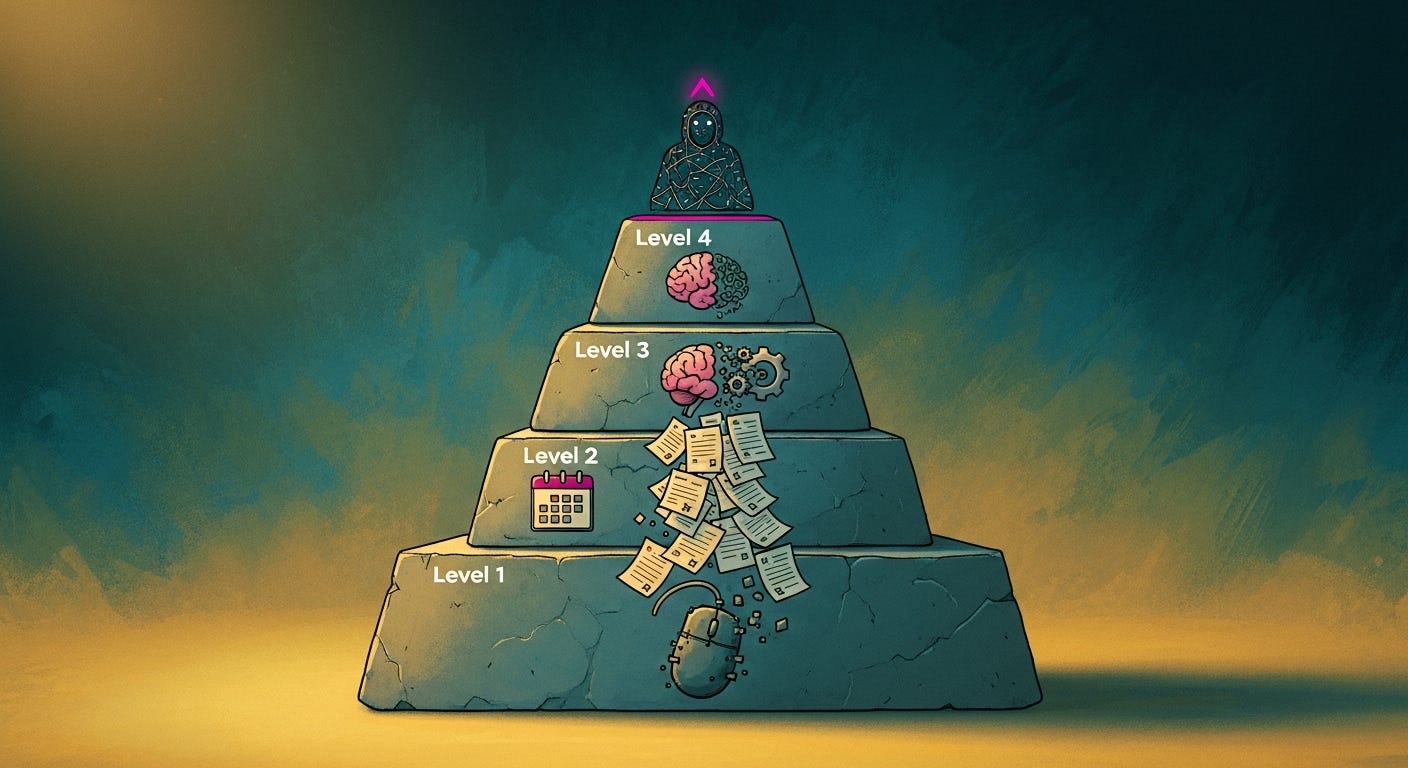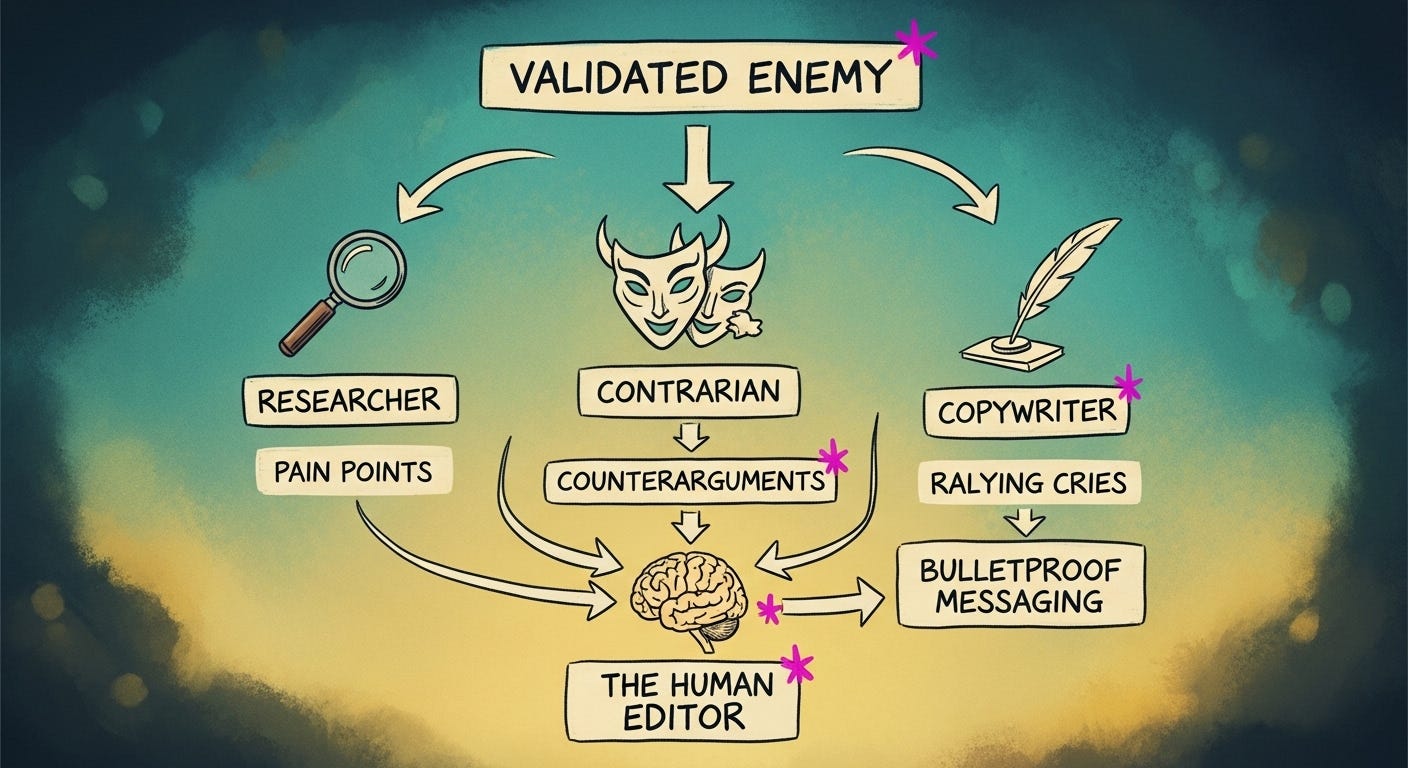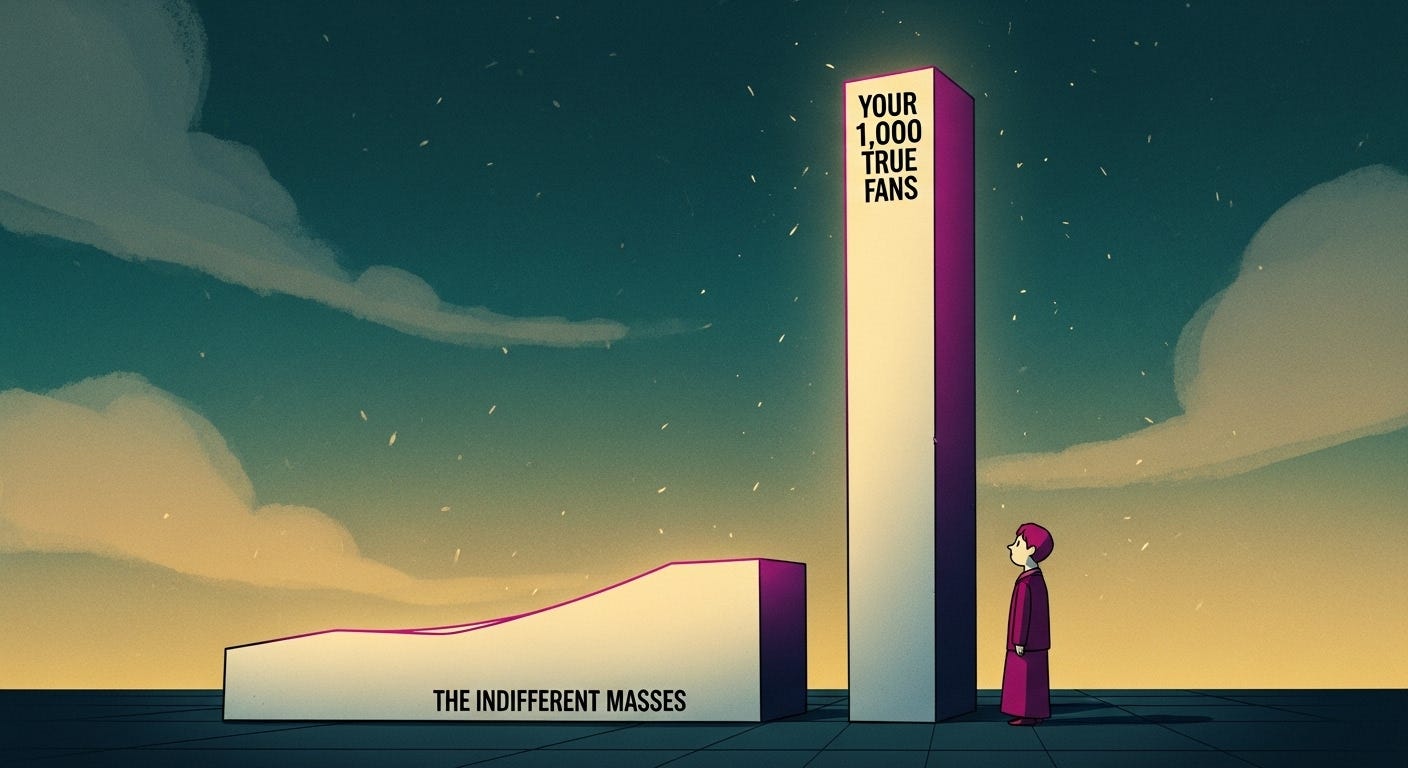The art of picking a fight
This workflow helps you declare war on mediocrity and build a brand people will fight for
Welcome to today's edition of ROBOTS ATE MY HOMEWORK. Today we're going to war. Not with each other, but with the beige, soulless sludge that passes for marketing.
Last week, I watched a founder I respect tear apart their own website copy. "It sounds like everyone else," they said, frustrated. "Like it was written by... I don't know, a robot." (hint, hint…)
The very AI tools we champion are being used to churn out an ocean of robotic, soulless marketing sludge that drowns out anything with a heartbeat.
Most brand messaging today is cowardly. It's written by teams so afraid of alienating anyone that they end up attracting no one.
This is a war for attention, and you can't win by being a slightly better version of boring. You win by picking a fight with a frustrating status quo your customers are already at war with.
(7-minute read)
Today, we're going to cover:
The 4-step AI workflow to find the real enemy your customers already hate and aim your brand directly at it.
Why a shared enemy is a more powerful psychological driver for loyalty than any feature on your roadmap.
A critical warning on how to wage this war without becoming the villain everyone loves to root against.
🤖 ROBOT REPORT CARD
Forget asking an AI for a list of names. That's intern-level work. We're here to build an unfair advantage, and that requires treating your AI like a strategic sparring partner.
But here's where most founders screw up. They pick the wrong enemy. Usually it's:
Too vague ("mediocrity")
Too small ("outdated software")
Too human ("our competitors")
Too safe ("inefficiency")
This workflow will help you generate insights you couldn't find otherwise.
Step 1: The AI-Powered "Rant Analysis" (Customer Pain Mining)
Your real enemy is in your gut. It's the anger you feel when you see another piece of lazy marketing or a soul-crushing process that everyone else just accepts.
Open a document and rant. Don't filter it.
What infuriates you?
What do your best customers complain about over drinks?
What "guru advice" is a complete lie?
Drop it all in. Then, feed the entire transcript to your AI.
Beyond your own rant, you can feed the AI raw data from:
Reddit threads from your niche-related subreddits
Twitter replies to industry leaders' posts
LinkedIn comment threads on industry problems
Real example from my own research:
Input: 50 Reddit comments about AI content
Top enemy candidate: AI-assisted content that feels stitched together from corpses (Frankenstein content, love this)
Identity statement found: "I'm not the type of writer who just hits generate and publishes"
Prompt:
You are a strategic analyst and qualitative data expert. I've pasted a raw "brain dump" of my frustrations about my industry below. Your job is not to solve these problems, but to act as a mirror. Analyze the text and identify the following:
1. The dominant emotional themes. What is the core emotion driving this rant (e.g., frustration, injustice, betrayal)?
2. The hidden villain. Based on my own words, what is the abstract concept, frustrating process, or flawed ideology I keep circling but haven't named? Find the pattern.
3. Propose 3 potential "Enemy Concepts" based on your analysis. Frame them as a fight against a principle.
Here is my brain dump: [Paste your entire unfiltered rant here]Step 2: The Fire Test (Enemy Validation)
An enemy you invent is a weak enemy. An enemy you discover your customers are already fighting is an unstoppable force. Before going further, you must validate.
Talk to 10 of your ideal customers. Don’t ask them about your product. Ask this:
"What's the most frustrating thing about [your industry] that everyone just seems to accept as normal?"
Then, create this validation matrix:
| Enemy Candidate | % of Customers Who Mentioned It | Emotional Intensity (1-10) | Competitor Claims This? | Can We Own This Fight? |If seven or more give you a version of the same answer, and it aligns with one of your AI-surfaced concepts from Step 1, you've struck gold. That's your enemy.
Step 3: The AI Sparring Partner (Pressure-Testing the POV)
Before we pressure-test the POV, we need to calibrate the fight. Not all enemies are created equal. Here are a few enemy examples:
Level 1 - The Daily Annoyance
Example: "Clunky software"
Good for: Productivity tools, simple SaaS
Level 2 - The Soul Crusher
Example: "Death by a thousand meetings"
Good for: Workflow tools, consultancies
Level 3 - The Silent Killer
Example: "The commodification of human creativity"
Good for: Creator tools, education platforms
Level 4 - The Existential Threat
Example: "The algorithm that owns your thoughts"
Good for: Privacy tools, alternative platforms
You now have a validated enemy and you must turn that feeling into a bulletproof point of view. Use your AI to play devil's advocate and break your idea so you can rebuild it stronger.
Prompt:
You are a skeptical, world-class brand strategist playing the role of a "red team" member. My brand is for [your audience], and I’ve chosen [your enemy] as our core enemy.
Your job is to attack this position. Be ruthless.
1. Why is this a weak, generic, or uninspiring enemy? Give me 3 strong counter-arguments.
2. Ask me 3 brutally difficult questions that will expose the flaws in my thinking.
3. Challenge me: What makes me the credible leader to fight this war? What proof do I have?Step 4: Multi-Agent Messaging Development
Now we get tactical. But instead of one generic prompt, we're using AI as different strategic voices:
Agent 1 (The Researcher): "Based on this enemy, what are 10 different ways our customers experience this pain? Be specific about contexts, emotions, and triggers."
Agent 2 (The Contrarian): "What would someone who LIKES this enemy say? What's their counterargument? How do we acknowledge this without backing down?"
Agent 3 (The Copywriter): "Based on the research and counterarguments, write 5 rallying cries that feel authentic but decisive."
The Human Editor: This is where you earn your keep. Take the AI outputs and add your actual experience, your specific voice, your proof of work.
⚠️ Disclaimer: Your enemy must be a principle or process, never a person or group. Fight ideas, not individuals. The moment you make it personal, you become the villain.
When we did this for my startup (Yahini), our initial rant was about the firehose of low-effort AI content, and it was a bit of a failure.
The AI's first pass (Step 1) gave us concepts like "Content Oversaturation" and "Information Overload." Technically correct, but they had no soul, no fight in them.
We went back to our validation (Step 2). Instead of just feeling overwhelmed, our customers felt disrespected by AI content that wasted their time.
We took that insight into the sparring session (Step 3). We told the AI our enemy was "Disrespectful Content." The AI pushed back hard: "How is that specific? Isn't all bad AI content disrespectful? What makes YOU the authority on respect?"
That's what forced the breakthrough. Our fight wasn't against all bad content, but rather specifically against the lazy, generative fluff masquerading as expertise. That's how we arrived at our true enemy: "AI Fluff." It was specific, it respected our audience's intelligence, and we had the receipts to prove we were the ones to fight it.
💡 A NEW CONCEPT FOR YOU
Picking a real enemy requires guts.
The moment you draw a line in the sand, the people on the other side (and even some bystanders) will start pointing out the exceptions.
To withstand that, you need a defensive shield. Then, to make your attack count, you need an offensive weapon.
Let's start with your shield.
Defensive: The Naxalt Fallacy
As you build your brand around an enemy, someone will inevitably point to a unicorn company that seems to have no enemy and say, "See? It doesn't work that way. Apple doesn't have an enemy."
This is a cognitive trap, a strategy-killer called the Naxalt Fallacy.
It’s shorthand for "Not All X Are Like That," and it's the flawed logic of using a single, famous counterexample to try and invalidate a sound general principle. It’s what our brains do to avoid a difficult truth.
"Generally, email marketing has a 42:1 ROI." → "Naxalt! It didn't work for my Shopify store."
"To succeed, founders need to be aggressive." → "Naxalt! Look at this one quiet, humble founder who made it."
Every time you see one viral post that breaks all the rules and you think, "Maybe my whole strategy is wrong," you're falling for it. The Naxalt Fallacy mistakes the exception for the rule, and it’s poison for anyone trying to build something from scratch.
The lesson is this: Your "enemy" is a strategic position, not a universal law. The Naxalt Fallacy is the weak argument of people who were never going to be in your tribe anyway.
Learn to identify it, nod politely, and ignore it completely.
Offensive: Identity-Protective Cognition
Now for the attack. Why is a shared enemy so ridiculously effective? Because of a deep psychological driver called Identity-Protective Cognition.
The theory is simple: We don't choose facts and then form our identity. We have an identity, and we adopt facts, beliefs, and products that protect it. When information challenges our sense of self or the group we belong to, our brain's defense mechanisms want to dismiss it, no matter how logical it is.
However… Your customer doesn't just want to solve a problem. They want to feel superior to the people who still have that problem.
This is your offensive weapon.
When you define an enemy, you are offering people an identity upgrade.
Your enemy defines the out-group. Your brand becomes the flag for the in-group. And your product becomes the indisputable evidence that your customer made the right choice, not just for their workflow, but for their identity.
Use this. Name the identity your customer is running away from, and hand them the identity they're aspiring to. That's how you build a brand people will fight for.
✨ ONE MORE THING...
Once you've identified your enemy, you need to operationalize the fight everywhere. Kevin Kelly's "1,000 True Fans" essay explains why you only need a core tribe, not mass appeal. But what he doesn't tell you is how enemy positioning accelerates tribe building.
Here's the 30-day implementation guide nobody gives you:
Week 1: Foundation
Homepage hero section mentions your enemy by name
Email signature includes your “rallying cry”
Bio updates across all social platforms
Week 2: Content
Write one piece explaining how to spot your enemy
Share a story about when you first encountered this enemy
Create a checklist: "Signs you're falling victim to [enemy]"
Week 3: Social Proof
Ask customers to share their own enemy encounters
Screenshot and share testimonials that mention fighting this enemy
Start connecting with other brands fighting similar enemies
Week 4: Sales Integration
Add enemy positioning to your pitch deck
Train your team to identify enemy-related pain in sales calls
Create a "before/after" case study showing enemy defeat
Read Kelly's essay. Then start your fight.
So, my question for you is simple.
Who, or what, is your real enemy?
Hit reply and let me know. I read every single one.
To winning the right fights,
Chief 🤖 at ROBOTS ATE MY HOMEWORK








I think we have a common enemy 😅 Love your post!
Excellent post. Thanks